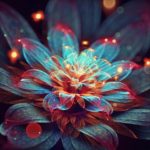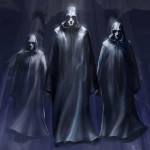Recent Comments
- Vajragoni on Speeding-forth in All Directions
- Scott on Speeding-forth in All Directions
- Vajragoni on The Tathāgata’s Dharma-body
- Ardent Hollingsworth on The Tathāgata’s Dharma-body
- Jim on The Black Dragon Eye Mandala: A Singular Focal-point of the Unmoving Principle
-
Recent Posts
Categories
- A Darkness Visible
- A Docetic Assessment
- A Mystical Odyssey through the Sagathakam
- Akṣayamatinirdeśasūtra
- Akṣhobhya’s Pure Land
- Ālaya-vijñāna
- Anūnatvāpūrṇatvanirdeśaparivarta
- Ariyapariyesanā Sutta
- Ascending the Noble Mountain of Primordial Perfection
- Asceticism
- Ashtavakra Gita in Light of the Unborn
- Audiobook
- Bankei Zen
- Beyond the Ascent
- Beyond the Rainbow Body
- Black Dragon Eye Mandala
- Bodhicitta
- Buddhism’s Black Holes
- Buddhist Anecdotes
- Buddhist Hells
- Buddhist Meditations on the Tarot
- Chuang-Tzu
- Contemporary Musings
- Ḍākiṇī
- Dāsbodh
- Dharmakaya Abbey
- Dharmakaya Stick
- Divine Revelation
- Doctrine of the Void
- Dust Contemplation
- Ekacitta: Advanced Studies in Dark Zen
- Entry into the Dharmadhātu
- Eremitical Dhyani Meditations
- Exploring the Book of Revelation
- Gnostikos
- Hsin Hsin Ming
- Journey to the Center of the Mind
- Karma and Rebirth
- Korean Sŏn
- Kulayarāja Tantra—The Motherly Buddha
- Little Office of Our Lady of the Void
- LSD and Psychedelic Buddhism
- Māṇḍukya Kārikā
- Mañjuśrī Teaches Prajñāpāramitā
- Māra and Satan
- Meister Eckhart
- Mud and Water: Bassui Zen
- Mystagogia
- Nirvana
- Notes from the Iron Stupa
- Nothingness in Nāgārjuna and John of the Cross
- Obscure Religious Cults
- Preparation for the Afterlife
- Primordial Qigong
- Reflections on the Saṃdhinirmocana Sūtra
- Spirituality
- Springtime with Tozen
- Terma: A Mind Film by Vajragoni
- The Afterglow
- The Awakening of Faith
- The Bhagavad Gita
- The Book of Bodhi
- The Cloud of Unknowing in Light of the Unborn
- The Diamond Sutra
- The Divine Ātman
- The Divine Liturgy of Vajrasattva
- The Doctrine of Awakening
- The Dragon Mind of Zen Tarot
- The Elucidation of Consciousness
- The Experience of No-Self
- The Great Perfection of the Unborn Mind: A Book of Privy Counseling
- The Heart Sutra
- The Hermit's Den
- The Khaggavisāṇa Sutta: A Rhinoceros Horn
- The Lankavatara Sutra
- The Lankavatarian Book of the Dead
- The Lion's Roar of Queen Śrīmālā
- The Lotus Sutra
- The Mahāparinirvāṇasūtra
- The Naga Chronicles
- The Platform Sutra
- The Ratnagotravibhāgaśāstra
- The School of the Spirit
- The Secret Golden Light of the Unborn
- The Soul
- The Śūrańgama Sūtra
- The Sutra of Primordial Enlightenment
- The Tathāgatagarbhatārā Tantra
- The Udāna
- The Unborn Mind Mythos
- The Unborn Mind Sessions
- The Unborn Odyssey: A Novel
- The Vajrasamādhi Sutra
- The Vimalakirti Sutra
- The Yogasūtras of Patañjali
- The Zen Teaching of Bodhidharma
- The Zen Teaching of Instantaneous Awakening
- The Zen Teachings of Huang Po
- Theologia Mystica
- Tozen Teaching
- Tsung-mi: An Intimate Study
- Unborn I Ching
- Unborn Light Reiki
- Uncategorized
- Vasubandhu and the Absolute
- Wisdom from the Masters
- Wordsworth and Zen
- Yoga of the Manomayakāya
- Zen
- Zuowang
Archives
- February 2024
- January 2024
- December 2023
- November 2023
- October 2023
- September 2023
- August 2023
- July 2023
- June 2023
- May 2023
- April 2023
- March 2023
- February 2023
- January 2023
- December 2022
- November 2022
- October 2022
- September 2022
- August 2022
- May 2022
- April 2022
- March 2022
- February 2022
- January 2022
- December 2021
- November 2021
- October 2021
- September 2021
- August 2021
- May 2021
- April 2021
- March 2021
- February 2021
- January 2021
- December 2020
- November 2020
- October 2020
- September 2020
- August 2020
- May 2020
- April 2020
- March 2020
- February 2020
- January 2020
- December 2019
- November 2019
- October 2019
- September 2019
- August 2019
- June 2019
- February 2019
- January 2019
- December 2018
- October 2018
- August 2018
- April 2018
- March 2018
- February 2018
- January 2018
- December 2017
- November 2017
- October 2017
- September 2017
- August 2017
- May 2017
- April 2017
- March 2017
- February 2017
- January 2017
- December 2016
- November 2016
- October 2016
- September 2016
- August 2016
- July 2016
- May 2016
- April 2016
- March 2016
- February 2016
- January 2016
- December 2015
- November 2015
- October 2015
- September 2015
- August 2015
- July 2015
- June 2015
- May 2015
- April 2015
- March 2015
- February 2015
- January 2015
- December 2014
- November 2014
- October 2014
- September 2014
- August 2014
- May 2014
- April 2014
- March 2014
- February 2014
- January 2014
- December 2013
- November 2013
- October 2013
- September 2013
- August 2013
- May 2013
- April 2013
- March 2013
- February 2013
- January 2013
- December 2012
- November 2012
- October 2012
- September 2012
- August 2012
- May 2012
- April 2012
- March 2012
- February 2012
- January 2012
- December 2011
- November 2011
- October 2011
Meta
Tag Archives: The Zennist
Dignāga and Anātman

For the Buddhist segment in our series we need to turn to the general father of Buddhist epistemology, and additionally the doctrine of the No-Soul (Self). Dignāga (480-540 CE) was a profound Buddhist scholar and logistician and elucidates in his epistemology that there are essentially only two ‘instruments of knowledge’ or ‘valid cognitions’ (pramāṇa); “perception” or “sensation” (pratyaksa) and “inference” or “reasoning” (anumāṇa). In his magnum opus, the Pramāṇa-samuccaya, he writes:
The Udāna and Covid 19

In these unprecedented times I shall remember these days as my Udāna period here at Unborn Mind Zen. With this new rendition of the suttas written in Light of the Unborn and accompanied with exegesis the ever-present and dominant backdrop has been the lingering presence of Covid 19. I live in upstate NY, pretty close to ground zero in NYC. The death tallies just keep adding up and up, hopefully there will be a peak shortly. But returning to anything resembling normalcy just isn’t in the cards any time soon. The economy has been destroyed, and millions are out of work—quickly to surpass Depression-Era statistics. Social distancing has become the new norm. I used to write many blogs encouraging solitude and aloneness but this present period out-trumps them all. It all started in early March when the Zennist informed us on his blog that he has suffered a debilitating stroke—we wish him well and recovery soon—but it was just a black omen of what has been befalling us since. I pray for the safety and well-being of everyone—we’re all in the same boat together on this one. Despite the doom and gloom we still need to take heart. This horror-show will one day subside, the enemy will be defeated, and it will all become a tragic memory indelibly etched in our collective-consciousness.
A Darkness Visible

Milton’s striking metaphor in Paradise Lost, the oxymoron Darkness Visible, is unparalleled in referring light (lumen) itself to something like a hellish tomb of veritable blackness. Robert J. Edgeworth in his essay entitled, Milton’s ‘Darkness Visible’ and ‘Aeneid’ 7, writes:
Posted in A Darkness Visible, Spirituality
Tagged Darkness Visible, Dionysius the Areopagite, Ensō, Hindi film, Icarus, Milton, The Zennist
3 Comments
Like an Ethereal Flower

[* It needs to be stated at the outset that the Sagathakam as translated by Suzuki oftentimes just stated “Chapter/Verse”, in which the reader was forced to go back into the main text to discover the full verses. What follows for this series is taken from the Complete Lanka and Discussion which can be found in our library. At the time in 2002, each chapter of the Lanka had to be copied down in its entirety since no such translation of Suzuki’s Lanka was available on the net. I copied the main body of the text, while the Sagathakam was copied by two other students at the time from Tozen’s Zen School of the Unborn Mind, courtesy of Orphea and Atimaya who copied the actual chapter and verse without the reader having to backtrack time and time again into the text. Their efforts are to be commended.]
Ekacitta: Advanced Studies in Dark Zen

The idea for this series occurred to me when contemplating one on George Grimm and his notion of “Self”. Then it struck me how someone in particular has thoroughly broken-down Grimm’s formulations on the matter, that someone being “The Zennist.” In point of fact, the Zennist’s foremost expertise on this can be considered as second to none as he is one of the most advanced, contemporary-sages when it comes to Ekacitta, or the One, Absolute Mind/Spirit. The Zennist’s long familiarity and vivacious acumen within the field of Zen Mysticism is vastly underrated when compared to more Western materialistically-bent and spiritually-myopic (purportedly Buddhist) “celebrities” whose focus is exclusively upon psychophysical components at the expense of the Transcendent. As the Zennist writes, “It almost goes without saying, but without the transcendent, there can be no mystical experience. Furthermore, without the transcendent, neither can there be genuine salvation and, hence, no actual deliverance from suffering.” He goes on to say that for those who hold fast to today’s fashionable notions of Zen, the “mystic” element is indeed an “inconvenient truth.” As a result, these incorrigible personages have downplayed the Zennist’s principles and teachings over the years, in particular during his “Dark Zen” days. Truth be told, they never took the time to digest the teachings, which even now speaks volumes. His Dark Zen Manual can be found in our library and one is encouraged to read and study it. It also needs to be underscored that since the inception of his blog, roughly circa 2007, the Zennist’s teachings have proven to be even more insightful and I for one have been studiously attentive to them over the years. This series will certainly expound upon the Zennist’s notions of Self, but also upon his profound insights into Zen Mysticism as a whole—including even some prevalent (and timely) sociological insights. We will survey the spectrum from Self, to authentic Zen- meditation, to his relationship and mystical encounters with “the kalyana-mitra (or virtuous spiritual friend)”.
Posted in Ekacitta: Advanced Studies in Dark Zen, Spirituality
Tagged Dark Zen, ekacitta, George Grimm, kalyana-mitra, the muni, The Zennist
1 Comment
A Shamanistic Dimension

Just finished reading the Zennist’s post entitled Restoring our spiritual senses. It evokes a shamanistic-dimension to destabilize our “despiritualized culture.” Reading this for me was one of those synchronistic moments as my blog from this past summer, Notes from the Iron Stupa , had as its salient theme a Shamanistic-Dimension. As the Zennist states it may indeed take a “modern form of shamanism” accompanied with “spiritual artifacts” that include special forms of incense and ritualized techniques to help remedy the despiritualized material malaise. If one were to read from the blog category here, The Divine Liturgy of Vajrasattva, then one would be privy to a mystically-charged form of Spiritual Liturgy that I conduct alone once a week—accompanied with my monk’s robe and the ritual tools required. From reading the “About Us” tab above I have now totally devoted my life like a spiritual anchorite “choosing to withdraw from the mundane affairs of samsara in order to devote myself to lead a life of intense meditation/contemplation and dharma-study in Light of the Buddhadharma.” The very creation of this website was done in the spirit of creating an online-monastery, where one is free to withdraw for a while from the hustle and bustle and just savor the sweetness of the Buddhadharma. It has become obvious to me for many years now that the monastic-hermetic route is a viable option in today’s increasingly dharma-ending age.
Posted in Spirituality
Tagged Monasticism, Shaman, Shamanistic Dimension, Spiritual Alternative Lifestyle, Stupa, The Zennist, Vajrasattva
10 Comments
Elements of Right Observance
ii.32 Observances that set spirit free
2.32 Elements of Right Observance.
Purification
Spiritual Contentment
Ascetic Discipline
Spiritual Reading
Devotion to the Lord of Yoga
Posted in The Yogasūtras of Patañjali
Tagged bodhichild channel, Lord of Yoga, Niyama, Right Observance, Spiritual Reading, The Zennist, Tozen, Yoga
Leave a comment
Mind Mastery
i.40-47 The Refinements leading to Perfection
1.40 Mastery of Mind extends from the smallest particle to the infinite vastness of the Cosmos.
The Dharma-Wizards of Oz: Bardo 1, Part 2
The mystical waters of my life flow deep, both internally and externally. Blessed Kateri Tekakwitha (1656-1680), the “Native American” woman—affectionately known in my neck of the woods as the Lily of the Mohawks, lived just 4 miles from my home. She will be canonized as a Saint this coming October. This area in which she lived, along with the North American Martyrs, is considered to be very sacred. The Shrine of the North American Martyrs, with its massive “Coliseum” and adjoining grounds, has always been a place of spiritual refuge and comfort. There are accounts by many who have experienced a strange and glowing “blue-flame-light” appearing at dusk, gently hovering through the deep ravine that contains the remains of the martyrs. Along with Kateri, Hildegard of Bingen—the 12th century Rhineland, Abbess, musician-composer and visionary Mystic—was recognized formally as a Saint earlier this year by Pope Benedict XVI and will be declared a “Doctor of the Church” this coming October; this will be an honorary title she will share with such Saints like John of the Cross and Saint Teresa of Avila—the great Carmelite Mystics. Over the years I have sensed Kateri’s presence while contemplating and walking through those sacred grounds in Auriesville and have also experienced some mystic revelations while meditating along with Hildegard’s rich and vibrant polyphonic music.
